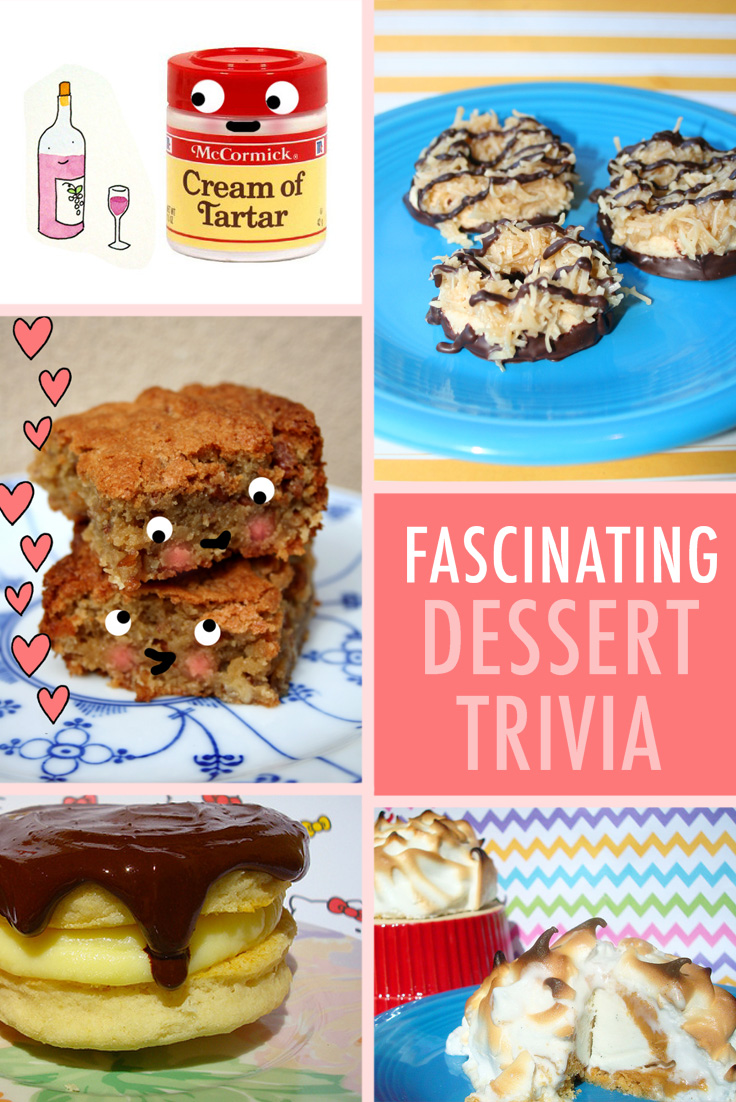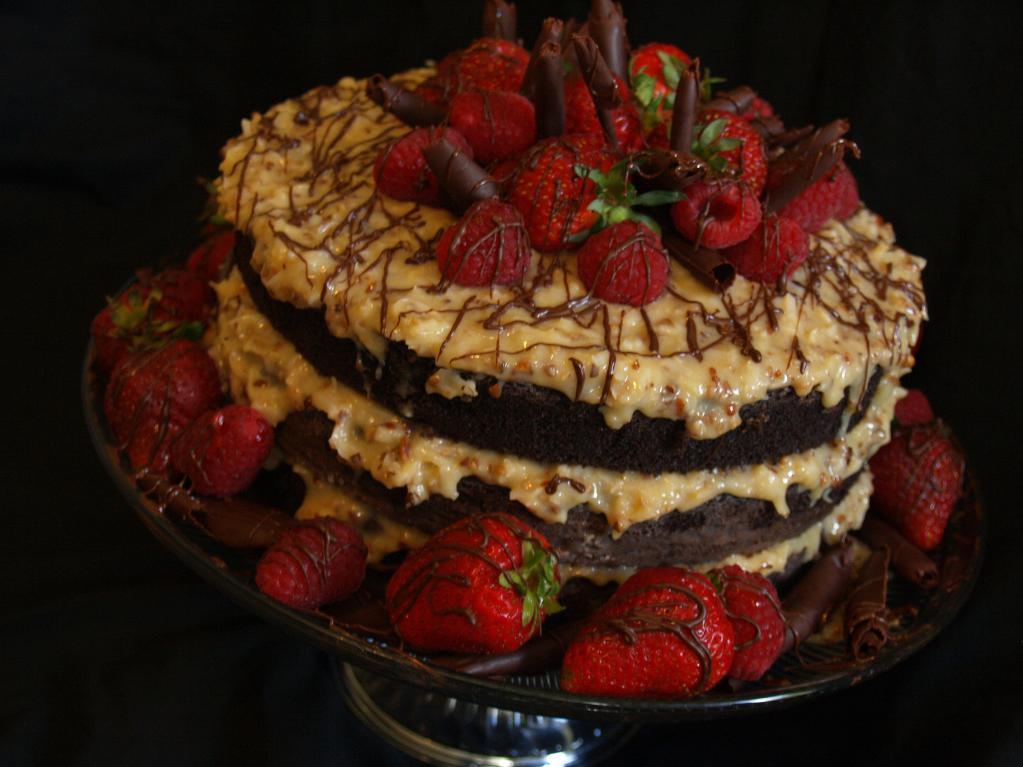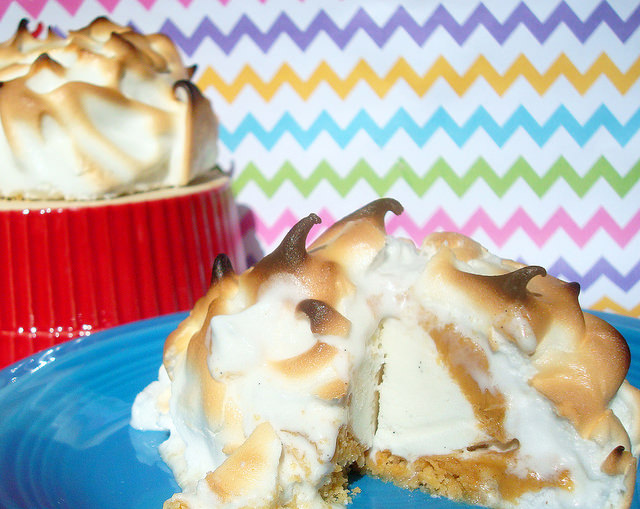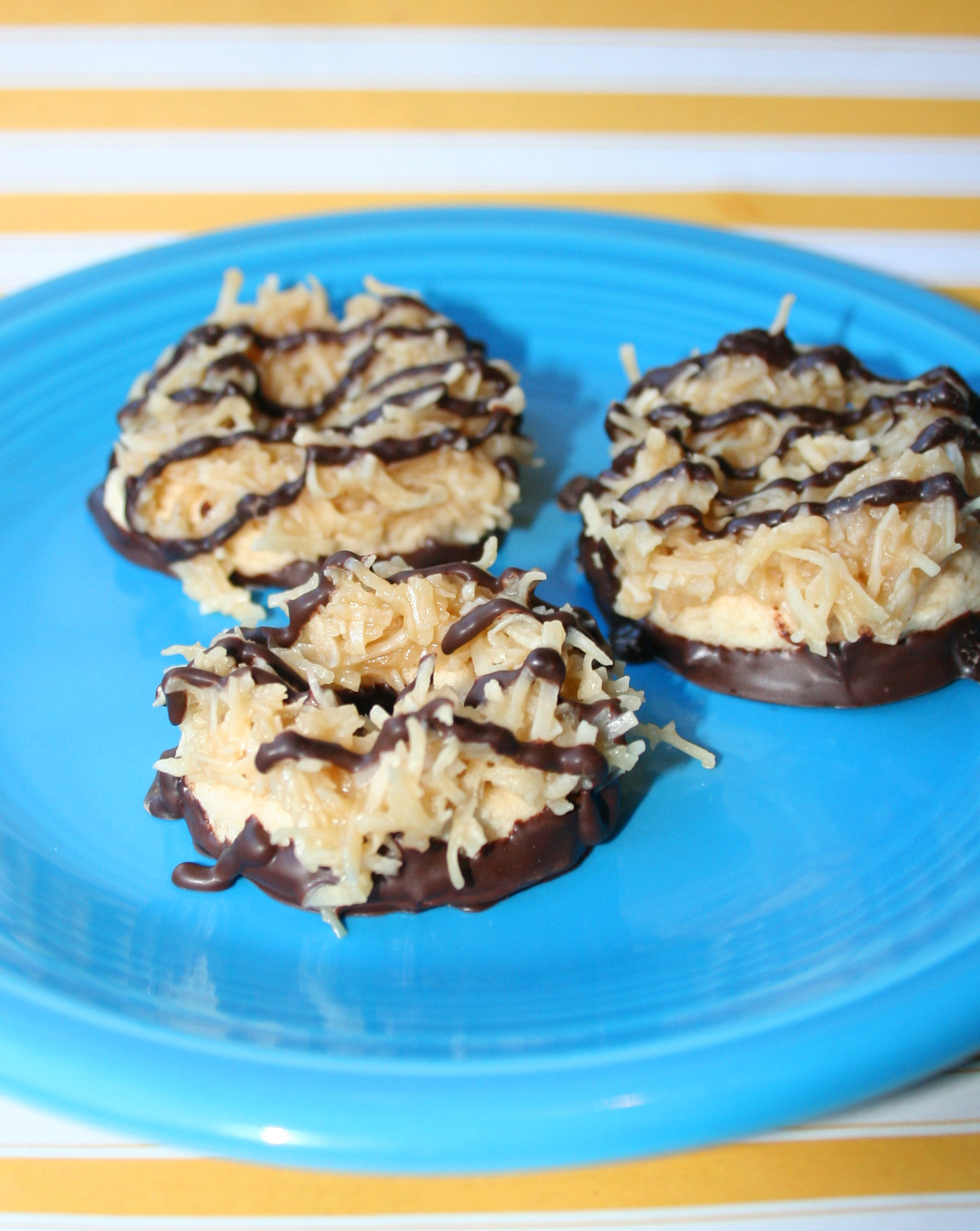Did you know that chocolate chips were invented after chocolate chip cookies? Or that cream of tartar is a byproduct of winemaking? We’ve got the scoop on these sweet bits of dessert trivia, fascinating baking facts and more.

Like any other sector of history, food history is full of interesting factoids and unusual stories of how things came to be. This collection of interesting baking and dessert trivia is learning at its sweetest, and we promise, there will be no quiz at the end of this lesson.
When it comes to witty banter, you’ll impress everyone at the next cocktail party you attend with your sweet savvy and deep well of dessert trivia.

Chocolate chip cookies via Rose Levy Beranbaum
1. Chocolate chips were invented after the chocolate chip cookie.
It’s true: the cookie preceded the chips. Chocolate chips were created in response to the cookie’s popularity, rather than the cookie being designed as a vehicle for the chips.
The first chocolate chip cookies were actually made by mistake. As the story goes, baker Ruth Wakefield tried to add chopped chocolate to cookie dough in hopes that it would be a shortcut to making a type of chocolate cookie, melting as the cookies baked. Well, the chocolate didn’t melt all the way, but those melty bits of chocolate studded in the cookies were good enough to be declared a new classic. The popularity of this happy accident would spur the production of easy-to-use chocolate chips a few years later, which turned out to have many more uses than just making chocolate chip cookies.
Explore the art of making delicious cookies in the Craftsy class Rose’s Heavenly Cookies: Tips and Techniques.

Photo via CakeSpy
2. Cream of tartar is a byproduct of winemaking.
The next time you say “cheers,” add a small “thank you” to your wine for producing the cream of tartar that makes your meringues so lofty and your snickerdoodles so tender.
Cream of tartar is formed from the sediment left over in barrels after the winemaking process. Once formed, it’s scraped off of the sides of the barrels and then cleaned and ground to form cream of tartar. It’s actually been stated that cream of tartar residue has been found in pottery dating back 7,000 years!
Master meringues with the Craftsy class Mastering Meringue: Techniques and Treats.

German chocolate cake via BeckysSweets
3. German chocolate cake has nothing to do with Germany.
The “German” of German chocolate cake fame was actually a man named Samuel German, who was an employee of an American chocolate company. German didn’t invent the cake, but he is the one who developed German’s sweet baking chocolate, which is a key ingredient in the cake.
Perhaps the most interesting aspect of the story, though, is that the chocolate was developed nearly 100 years before the cake began to gain popularity. The cake was first dubbed “German’s chocolate cake,” but it was eventually shortened to “German chocolate cake.” This means that Samuel German died long before he got to taste the now-famous cake that bears his name.
Explore chocolate cakes for every appetite with the Craftsy class Decadent Chocolate Cakes.

Boston cream pie cupcakes via smaquin7480875
4. Boston cream pie is actually a cake.
Well, if you’ve ever tasted Boston cream pie this isn’t news to you. But why call it “pie” instead of cake?
Many label it a case of “lost in translation.” As folklore has it, the dessert, which was made famous at Boston’s groundbreaking Parker House Hotel, was developed by an Armenian-French pastry chef. At the time when the dessert was developed, pie tins were far more common in American households than cake pan. If the cake was originally baked in pie tins, it’s easy to see how the multicultural chef, whose first language was not English, might use the terms “pie” and “cake” interchangeably.
This isn’t the only cake of an incorrectly named “pie.” Cookbooks from the 1850s reveal several similar confections, including “Washington pie,” which is a cake somewhat similar to Boston cream pie.
Learn how to make creative cupcakes based on classic cake flavors in the Craftsy class The Perfect Cupcake.

Photo via CakeSpy
6. Blondies preceded brownies.
If you delve into old cookbooks, you’ll find that blondies were in recipe rotation before brownies, though they both went by different names. As early as the mid-19th century, there were recipes that seemed to combine the flavors of butterscotch, a popular candy at the time, with flour and a leavening agent. It’s possible that these recipes were adapted from old-time gingerbread recipes and combined with the flavors of butterscotch.
The first recipes for brownies, on the other hand, didn’t start cropping up in cookbooks until the early 1900s.

Photo via CakeSpy
5. Baked Alaska was created in New York City.
What we commonly call “Baked Alaska” was dubbed as such by the famous Delmonico’s Restaurant in New York City in 1876 to celebrate Alaska’s annexation.
The restaurant didn’t invent Baked Alaska, though. The dessert was developed by an eccentric fellow who went by “Count Rumford” (whose real name was Benjamin Thompson and who was a physicist and rumored spy). As he was experimenting with dessert techniques, Count Rumford realized that while pastries would conduct the heat and protect a cold core, a layer of meringue would do so to an even greater degree. He created a dessert that was called either “omelet surprise” or “omelet à la norvégienne,” which translates to “Norwegian omelet,” in reference to its snowy appearance.

Croissants via boriqua
7. Croissants weren’t created in France.
Could there possibly be a French-ier thing than a flaky, buttery croissant? Despite these buttery delights’ association with France, they are actually an Austrian creation. Croissants were preceded by something called “kipferl,” which is a dowdier, simpler version of the croissant developed in Austria.
It’s said that the concept was taken to France by a man named August Zang, who founded a Viennese bakery in France. He introduced yeast into the butter pastry, and the method quickly took off — the French croissant as we know it was born.
Learn how to make croissants at home with the Craftsy class Classic Croissants, Modern Techniques.

Photo via Craftsy
8. Girl Scout cookies were originally homemade.
Boxed cookies weren’t how the Girl Scout cookie phenomenon started. Originally, the cookie baking was an at-home activity, and the cookies were sold as a fundraiser at a classic bake sale for the first time in 1932. The response was so positive that the savvy Scouts realized they’d maximize sales if they spent more time selling than baking, and the cookies began to be produced commercially. Enthusiasm only grew, and by 1937, more than 125 Girl Scout Councils were hosting sales.
The offerings increased — and so did sales. Today, it’s hard to imagine a world without boxed Girl Scout cookies!

Share tips, start a discussion or ask one of our experts or other students a question.
No Responses to “Sweet Trivia: 8 Totally Mind-Blowing Dessert and Baking Facts”